Analysis by David Shapley
It's not surprising that bananas have always had one of the highest profiles in the fruit and vegetable sector.
The fruit has its idiosyncrasies. It is classed biologically as a herb and can grow year round in the tropics, so it is one of the few non-seasonal fruits. But it is alone in needing synchronised ripening, which takes place in a six-day cycle before it ends up on the shelf.
In terms of consumption, based on value, the banana still takes the number one spot, beating apples into second place for the fifth year in succession. Last year, according to the Banana Group, which represents the major importers and ripeners, the UK consumed 770,000 tonnes from a variety of sources, from the Caribbean to Central America.
This is an impressive figure in a market where fruit consumption is still low compared with the rest of Europe, representing a doubling in 16 years, according to BG chairman David Read.
Not only are bananas popular, they represent big business for the 10 or so major importers and ripeners. Refrigerated vessels arrive like clockwork at UK ports as part of a complex international distribution chain.
Banana centres are expensive to build. A modern UK facility can cost as much as £5m; the 20 spread nationwide have the capacity to handle 750,000 cartons a week.
Prices are down this summer, however. Wholesale market levels have been in the region of £9 or £10 for several weeks and, according to trade sources, the situation is not expected to improve until the autumn.
Simply, the industry has had to come to terms with increasing competition from other fruit. Bananas are facing increasing pressure from massive European stone and soft fruit crops, but winter fruits such as apples and citrus are now widely regarded as over-produced.
Most trade sources agree that additional disruption has been caused this summer by the illegal importing of fruit through Italy into the European Union market, which is at best in balance and often in oversupply. These volumes are expected to have accounted for 1-2% of EU requirements, but trade sources indicate this has now stopped.
The Taylor Nelson Sofres superpanel indicates that, to the end of April, annual UK sales of £422.4m represented a fall compared with the previous year.
For Read, price has always been secondary on for consumers. He hammered home this message to multiple buyers, which now account for 80% of sales. It appears to have paid off in recent times because major long-term price cuts have been avoided.
Tesco remains the largest banana retailer, with 22.5% of value, ahead of Sainsbury's by five percentage points. According to TNS, however, price reductions have driven value sales down by 6%.
The only retailer to have driven through extra volume is Asda. If price cutting has had an effect, Morrisons has proved an exception, showing strong year-on-year growth in the year to April, despite raising prices it had 25% growth in value and 21% in volume. The value of its market share rose from 2.9% to 3.8% as a result.
Organics are still in their infancy, accounting for 2.4% of sales. Some 70% of these are sold by Tesco and Sainsbury's.
The value of the prepacked banana market has grown by 53% in the same period, to the disadvantage of the much larger loose fruit market, which has declined by 11%.
Apart from the small volumes of mini apple bananas and red bananas that fill an exotic niche market, there has been a plethora of variously labelled "small fruit", "medium fruit" and "children's packs".
Two years ago, the innovation of "partially ripening packs" by Marks and Spencer was replicated in less than six months by Tesco. Prepacks account for 18% of all sales, a 3% rise over last year, according to Dickon Poole, marketing manager for JP Bananas, in which Dole has an interest. But with as many as eight different packs on offer, however, the indications are that multiples could seek to rationalise.
Meanwhile, suppliers have seen opportunities to further develop their brands. Fyffes, which accounts for about one-third of the fruit sold in the UK, is launching what it believes is the first Euro-pack in the UK, after trials in Germany and Scandinavia.
Using fruit grown in Colombia and soon to include Suriname, seven medium-sized fingers are being branded with Freddy Fyffes, a cartoon character who appears on Fyffes' educational CD-Roms for schools. With competition instructions to the web site on the bag in seven languages, children across Europe can click onto the internet and enter competitions. "We believe it is the first in our trade in a number of areas," says Dr Laurence Swan, managing director, research and development at Fyffes.
Fyffes believes there is potential for the fruit, which is bagged on the plantations and bar-coded so that retailers can set their own prices on the till.
UK brand manager Paul Barrett says retail sales could be increased by 10%. "Smaller retailers will now have their first opportunity to develop this section of their business," he says.
Many banana brands, such as Dole, Del Monte, JP and Chiquita, are also well established. Through its 50/50 partnership with Windward Isles growers, Geest Bananas has a specially designed label on bags and loose fruit.
Its commercial director, Sevki Isin, confirms that Geest has recognised further potential for Fairtrade bananas and says a deal is imminent.
Fairtrade seeks better deals for third world producers. Spokesman Phillip Wells says fruit supplied by several other importers is available in three-quarters of the Co-ops, most Waitrose outlets and more than 60 Sainsbury's stores. Asda has also tested in Bristol.
Other possibilities are under discussion. The Caribbean Banana Exporters Association has been examining the potential for a generic regional brand, although trade sources say opinions differ widely. The concept is also being discussed with the multiples and a decision is expected by the autumn.
This latest move to create a stronger identity underlines the fragility of the supply base. Traditional suppliers in the Caribbean have long been protected in Europe under the Lome agreement, which became the safety net for the EU's common banana policy.
These bananas, which remain expensive to produce because of the thousands of small growers and the mountainous countryside, are still entitled to duty-free access.
For them, the threat lies in larger and cheaper bananas from dollar sources mainly Central and South America. With free access, they could flood the market and cause hardship in the Caribbean, where there are no alternative crops.
The current complex system of variable tariffs and quotas keeps the total European import figure in line with EU consumption. Currently, 2,553,000 tonnes of dollar fruit are allowed into the EU at a rate of 75 euros per tonne but the tariff rises to nearly 10 times this amount for any further volumes.
When this system came into being, it was regarded as a skilful compromise that matched competing interests, although it was later claimed to be in direct conflict with GATT rules.
But for the past three years the system has been open to indirect challenge from the US via the World Trade Organisation. Many multinational suppliers with their own plantations are American-based.
Kevin Bragg, president of Pacific Fruit, told delegates to a recent European shipping conference that the EU was looking at several options. If agreement could not be reached, however, it would press for a tariff-only solution confirmed virtually overnight when the French took over the EU presidency.
Nevertheless, such a move would require unanimity among member states. Bragg told the conference: "We all need a solution one is almost tempted to say any solution that ends this uncertainty."
{{FOCUS SPECIALS }}
Close menu
- Home
- Retail & Wholesale
-
Products & Suppliers
- Back to parent navigation item
- Products & Suppliers
-
Product Categories:
- Back to parent navigation item
- Product Categories:
- Alcoholic drinks
- Bakery
- Cereals & breakfast
- Cheese
- Chicken & poultry
- Chocolate
- Confectionery
- Crisps, nuts & snacks
- Dairy
- Fish
- Fresh produce
- Frozen
- Household
- Meat
- Own Label
- Sauces & condiments
- Seasonal
- Soft drinks
- Vaping
- Vegan & plant-based
- World foods
- Suppliers
- People
- Reports & Data
-
Topics A-Z
- Back to parent navigation item
- Topics A-Z
-
Popular topics:
- Back to parent navigation item
- Popular topics:
- Cost of living crisis
- Crime
- Deposit Return Schemes
- Finance
- Government & Regulation
- Health
- Inflation
- Loyalty
- Marketing
- Mergers & Acquisitions
- New Product Development
- Sourcing
- Supply chain
- Sustainability & environment
- Technology
- Ultra Processed Foods
- Vaping
- A-Z all topics
- Content by type:
- Events
- Subscribe now
Sign in to comment on this article
Not logged in before? Register for FREE guest access today.
You will be able to:
- Read more stories
- Receive daily newsletters
- Comment on stories
Advert



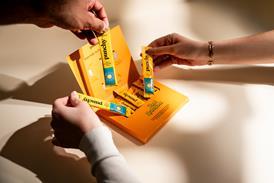




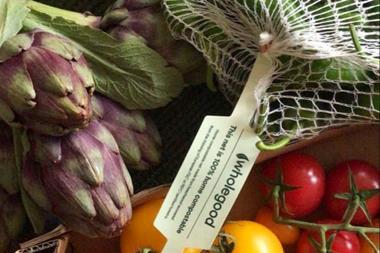


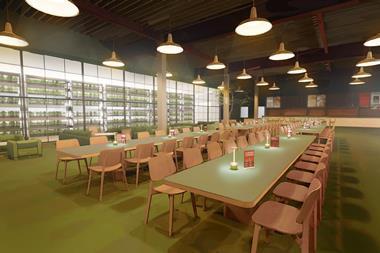




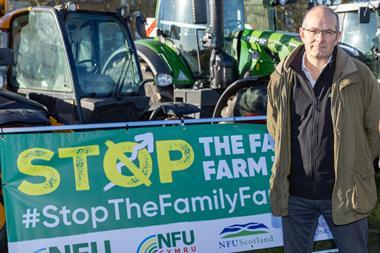
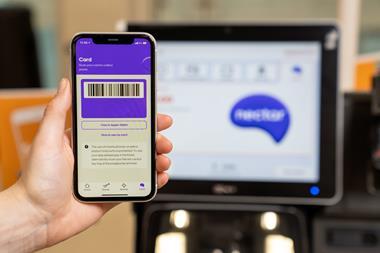

No comments yet